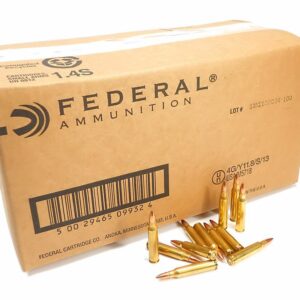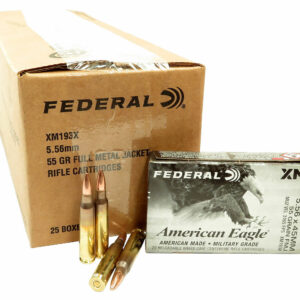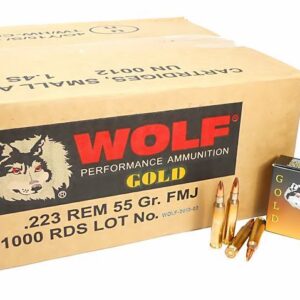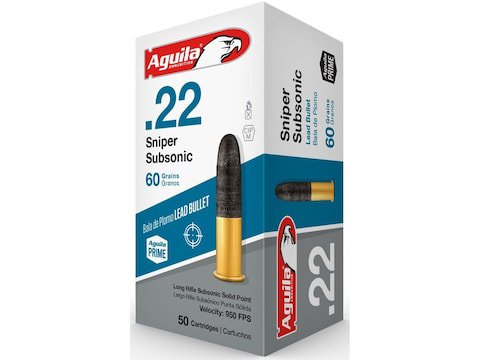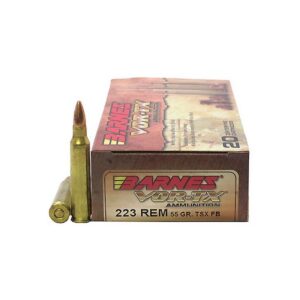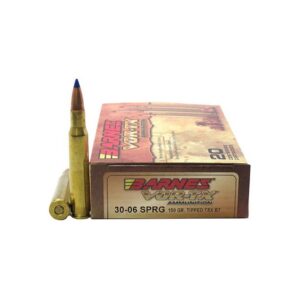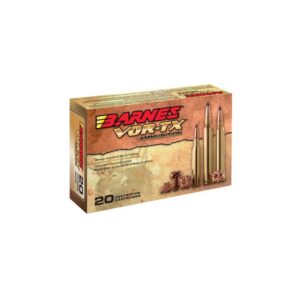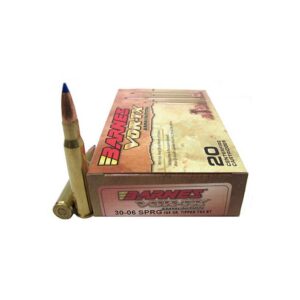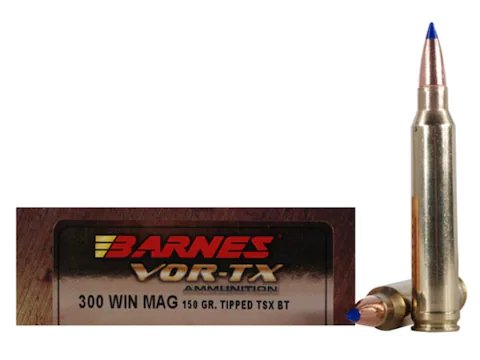Rifle ammo
The vast majority of bullets are constructed of a solid lead core with a copper covering (called a “jacket”) that contains the lead. Lead is used because it’s an extremely dense, yet cheap metal, making it perfect for giving projectiles their weight while keeping the overall size small. Copper is used because it’s strong enough to keep the softer lead from de-forming, but soft enough to allow the gun’s rifling to “grip” the bullet.
The copper jacket starts out as a cup, having been cut from a long sheet. Through a process called “drawing,” the cup is lengthened and shaped to fit the profile of the projectile they’re making. These cups will eventually end up as jackets for 5.56 NATO rounds.
However, while this process is very efficient, it’s extremely difficult to actually get the metal to encase the entire lead core without any gaps. To keep production costs down, bullet manufacturers usually leave one end of the projectile open. Which end is open – and how that’s done – determines the classification of the projectile.
Here are three 150 grain .308 caliber bullets (a “grain” is a unit of bullet weight). And while they look very similar, the way in which they were manufactured is very different. The first projectile on the left is a “full metal jacket” (FMJ) round with a solid copper point. The other two are an open tip and a soft point bullet respectively, with openings in the copper at the tips of the projectiles.
-
223 5.56×45 Ammo 55gr FMJ Federal American Eagle (AE223BKX) 1000 Round Bulk Case
Bullet Type: Full Metal Jacket Boat Tail
Bullet Weight: 55gr
Bullet Jacket: Copper
Case: Brass
Velocity: 3,240 ft/s
Powder: Non-Corrosive
Primer: Boxer
Quantity: 1000 Round Bulk Case
Notes: Made in the USA. American Eagle is Federals budget line ammunition. Great for target practice when you don’t want to spend a fortune.
$599.00$899.99 -
223 5.56×45 Ammo 55gr FMJ Federal American Eagle (XM193X) 500 Round Case
Bullet Type: FMJ XM193, Full Metal Jacket
Bullet Weight: 55gr
Bullet Jacket: Copper
Case: Brass
Velocity: 3,165 ft/s
Powder: Non-Corrosive
Primer: Boxer
Amount: 500 Round Case
Notes: American Eagle rifle ammunition offers consistent, accurate performance at a price that’s perfect for high-volume shooting. The loads feature quality bullets, reloadable brass cases and dependable primers.
$399.99$599.99 -
5.56×45 Ammo 55gr FMJ Wolf Gold Brass Case 1000 Round Case
Bullet Weight: 55gr
Bullet Jacket: Copper
Case: Brass
Powder: Non-Corrosive
Primer: Boxer
Amount: 1000 Round Case
Notes: This 223 Rem Wolf Branded ammo is high quality brass case ammo made in Taiwan and offers smooth function, reliability and very good accuracy in semi-auto rifles. Featuring reloadable brass cases, sealed boxer primers, non-corrosive, non-magnetic 55 grain bullet. A great value for this type of ammo in today’s market at a price that’s so low its affordable to shoot or just stocking up. Ideal ammunition for use in AR-15 rifles with the application of target practice, range use, all purpose ammo, etc. Buy Wolf ammunition with confidence, Wolf ammo is backed by the importer with a 100% satisfaction guarantee, if you are not happy with the products performance Wolf will buy it back for a full refund.
$550.00$950.995.56×45 Ammo 55gr FMJ Wolf Gold Brass Case 1000 Round Case
$550.00$950.99 -
Barnes Bullets VOR-TX 30-06 180GR TTSX BT 20rds
Barnes VOR-TX, 30-06, 180 Grain, Boat Tail BB30063$46.99 -
Barnes Bullets VOR-TX 300 Remington Ultra Magnum (RUM) 190 GR LRX Boat Tail 20 rds
Barnes Bullets 29011 VOR-TX 300 Remington Ultra Magnum (RUM) 190 GR LRX Boat Ta$62.99

